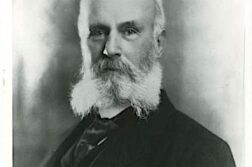IN MY TRAINING to become a primary care physician, I was taught that the best way to elicit a patient’s sexual health history was with a single question: “Do you have sex with men, women, or both?” The remarkably obtuse assumption that a patient would immediately open up to their doctor in this way boggled my mind.
More importantly, this simplistic approach to sex, gender, gender identity, sexual attraction, behavior, and identity pervades the medical community’s perspective of sexual and gender minority (SGM) individuals. Through such questions, binary assumptions are reinforced: male versus female, hetero- versus homosexual versus bisexual. In this respect, medicine today falls short of the realities of people’s lived experiences and the myriad ways in which behavior and sexual identity intersect and affect people’s health and well-being (Streed and Makadon, 2017).
Boxes to Check
What my colleagues and I are addressing in our research and practice are what can be seen as alternative sexualities that go beyond the standard monosexualities of homo- and heterosexual, i.e., the romantic and/or sexual attraction to one sex or gender. These alternative categories can include behaviors, identities, and communities that stand in contrast to, or even in opposition to, socially and culturally dominant sexual orientations. What follows is a partial list of sexualities that we have encountered that fall outside the monosexual paradigm of “gay” and “straight.”
Selected Alternative Sexualities
Androsexual: Being primarily attracted—sexually, aesthetically, and/or romantically—to masculinity.
Asexual: Not experiencing sexual attraction to any sex object. Note this is distinct from celibacy, which is a conscious choice, while asexuality is an intrinsic aspect of a person.
Bisexual: Able to experience sexual and romantic attraction to people of one’s own gender as well as toward another gender.
Demisexual: On the asexual spectrum but tending to experience some sexual attraction in certain situations, such as after one has formed a strong emotional or romantic connection with a partner.
Gynesexual: Being primarily sexually, aesthetically, and/or romantically attracted to femininity.
Pansexual: Tending to experience sexual or romantic attraction to members of all gender and identity expressions. Although similar to bisexual, the term “pansexual” is preferred by some because it doesn’t reinforce the gender binary inherent in the term “bisexual.”
Skoliosexual: Being primarily attracted to genderqueer, transgender, and/or non-binary people.
References
Dahlhamer, J. M., et al. “Sexual orientation in the 2013 national health interview survey: A quality assessment.” Vital Health Statistics 2(169), 2014.
Eliason, M. J., et al. “The ‘Something Else’ of Sexual Orientation: Measuring Sexual Identities of Older Lesbian and Bisexual Women Using National Health Interview Survey Questions.” Women’s Health Issues, 26 Supplement 1, 2016.
Eliason, M. J., and Streed, C. G., Jr. “Choosing ‘Something Else’ as a Sexual Identity: Evaluating Response Options on the National Health Interview Survey.” LGBT Health, 4(5), 2017.
Federal Interagency Working Group on Improving Measurement of Sexual Orientation and Gender Identity in Federal Surveys, 2016.
Lunn, M. R., et al. “A digital health research platform for community engagement, recruitment, and retention of sexual and gender minority adults in a national longitudinal cohort study—The PRIDE Study.” Journal of the American Medical Informatics Association, 26(8-9), 2019.
Mayfield, J., et al. “Beyond Men, Women, or Both: A Comprehensive, LGBTQ-Inclusive, Implicit-Bias-Aware, Standardized-Patient-Based Sexual History Taking Curriculum.” MedEdPORTAL, 13, 2017.
Streed, C. G., Jr., and Makadon, H. J. “Sex and Gender Reporting in Research.” JAMA, 317(9), 2017.
Carl Streed Jr., MD, MPH, is an assistant professor at the Boston University School of Medicine and research lead at the Center for Transgender Medicine and Surgery.






